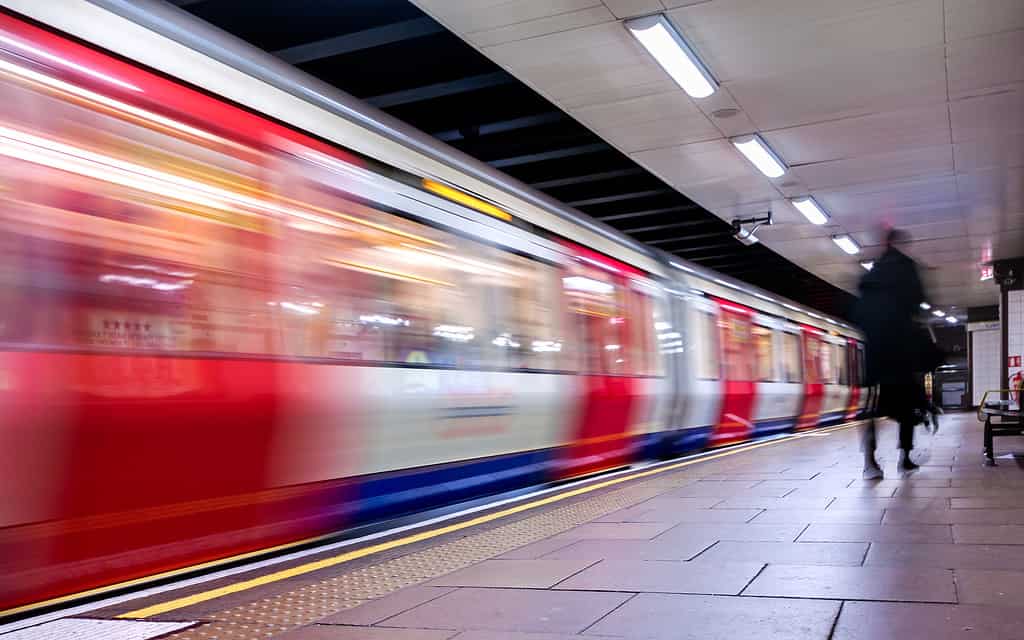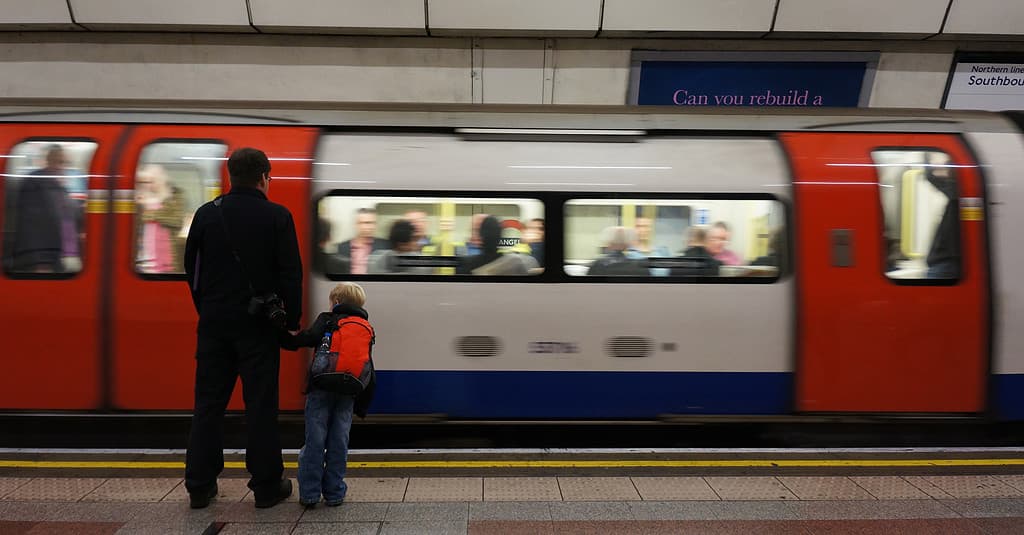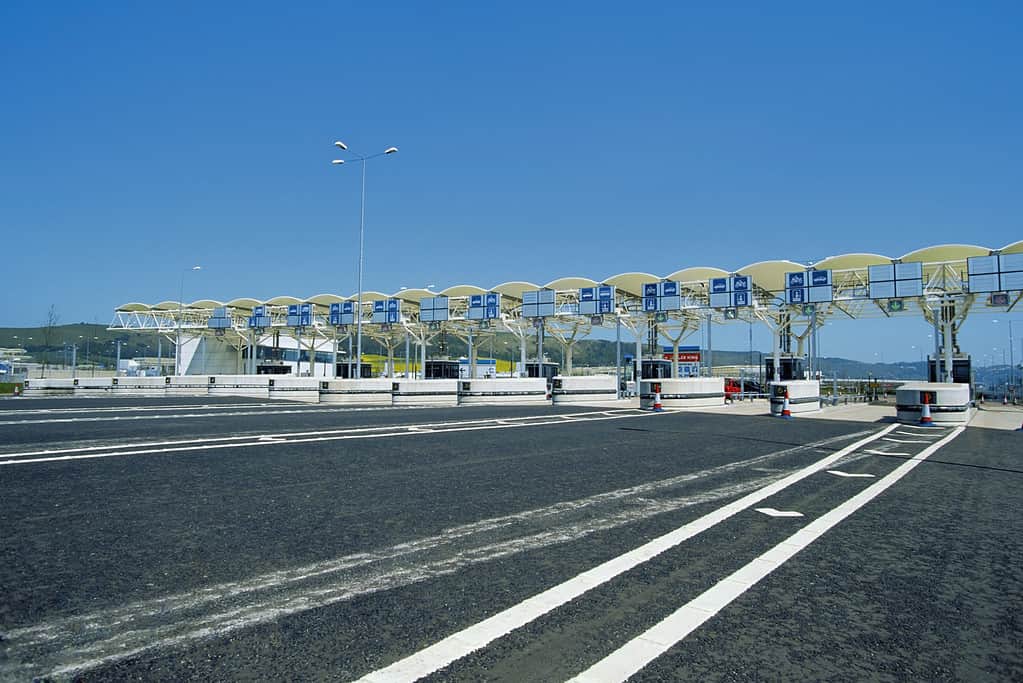Trains, trains, trains! Europe has become synonymous with train travel. Europe also has become synonymous with public transportation in the form of mass rapid transit. Underground trains that take people from Point A to Point B. For Europeans in many of their capital cities (or other secondary cities), it’s a way of life. Londoners dash to get on the tube for work and after work, you’ll catch a glimpse of them with tired faces.
In this article, we’ll explore the longest train tunnel in England. In this sense, mass rapid transit systems (or the underground/tube as the English call it) are railways. The longest train tunnel in England is, indeed, a tube line.
Let’s explore what the longest train tunnel in England is, more information about it, its location, and other cool things.

The world’s first underground railway — for both passengers and goods — opened in London on January 10, 1863.
©minoandriani/iStock via Getty Images
What Is the Longest Train Tunnel in England?
The longest train tunnel in England is the Northern line, which is part of the London Underground system. It spans a total of 27,800 meters (17.27 miles) long. The second place goes to the Channel Tunnel. Although the Channel Tunnel is 50,459 meters (31.35 miles) long, and connects London to Paris through the English tunnel, half of the tunnel is on the French border and the other half on the British side. Thus, the British part of the Channel Tunnel is slightly shorter at 26,988 meters (16.8 miles) long.
Where Is the Northern Line Located?
The Northern line is a tube line in London, connecting North and South London. The part where the tunnel is continuous and at its longest goes from Morden in South London to East Finchley, which is in Northern London.
History of the Northern Line
In its inception, the Northern line was three railways that ended up being connected. The connections started in the early 1920s and continued into the 1930s. Once all connections were completed, the name of the line was changed to the Northern line in 1937. Throughout the years, extensions took place to alleviate the growing population. In the 1990s, seeing the deterioration of the line, the government stepped in to do a complete upgrade of the rails and the underground cars. In recent years, the Northern line has been extended to serve the communities around the Battersea Power Station. There are also plans to extend the Northern line in South London around Clapham.

The London Underground has 11 lines and 272 stations, with its most recent line, the Elizabeth line, opening in 2018.
©SherryK70/iStock via Getty Images
Wildlife Near the Northern Line
Because the Northern line traverses central London, wildlife around these areas will be concentrated in parks and gardens throughout the city. Let’s take a look at the most popular animals you may see near the Northern line.
European badger

European badgers are naturally friendly creatures, but when confronted or corned, they can turn aggressive.
©Edward Hasting-Evans/Shutterstock.com
The European badger is one of the most common animals to roam the parks and woods of London. They have black and white stripes and they are abundant in the UK, being the largest land mammal in the country. They are around London all year long, so look carefully if you want to take a picture of one of them.
Jewel beetle

In Asian countries like Japan and India, the jewel beetle has been used as jewelry and decorations.
©panor156/Shutterstock.com
Hampstead Heath is one of the most beautiful parks in London. Part of Hampstead Heath has been designated as a “Site of Special Scientific Interest,” known as the Hampstead Heath Woods. There you can find an abundance of flora — most notably the beech and sessile oak trees — and fauna, as well. In particular, the jewel beetle finds its home here. It’s an extremely rare beetle that is unique because of its metallic colors of green, blue, red, and yellow.
Red Fox

Foxes are cute creatures and there are several colors of foxes including red, white, gray, and brown.
©Ondrej Prosicky/Shutterstock.com
There are over 10,000 foxes in London. Chances are you will spot one when the sun starts setting. They’re all over the place and they are not scared creatures. The red fox’s natural habitat was the suburban areas of London, but as the city got bigger and the London Underground expanded, humans started encroaching on the foxes’ territory. Foxes adapted to their new environments and now you can find them when you’re walking back home after a night out.
Things to Do Around the Northern Line
The Northern line is the most transited in the London Underground. Because the northern line primarily serves London and its 9 million people, there is much to do around the Northern line. London is a great city to explore and you won’t be running out of fun activities to do in the United Kingdom’s capital city.
For those wanting to visit London’s most iconic landmarks, the first on the list is getting out at Tottenham Court Road. There you will be in Central London and an entire menu of tourist attractions for you to see. Wander around the posh neighborhood of Soho and then make your way south to Trafalgar Square, Piccadilly Circus, or Covent Garden. Get a glimpse of Buckingham Palace and 10 Downing Street, and keep a look out for the Prime Minister or the King of England.
If you want something more eclectic, check out the more bohemian neighborhood in Camden Town. Get out at Mornington Crescent and you’ll be in the middle of the action. There are a lot of cute shops and restaurants in this area. And then you can walk around Regent’s Park to see gardens, wetlands, and other biodiversity.
Lastly, if you want gorgeous views of the entire city, head to Hampstead Heath. Get out at Hampstead and be awestruck at the view of London. You can walk around Hampstead Heath to see nature at its finest — from wetlands to beautiful meadows.
Close Second: The Channel Tunnel

The Channel Tunnel is the third longest train tunnel in the world, following the Gotthard Base Tunnel in Switzerland and the Seikan Tunnel in Japan.
©Medioimages/Photodisc/Photodisc via Getty Images
The Channel Tunnel is the second-longest tunnel in England. The total length of the tunnel is over 50,000 meters (31 miles), but the British portion is 26,988 meters (16.8 miles). This tunnel was built to connect two popular capital cities, London and Paris. It opened in 1994 to great popularity. After COVID-19, passenger service has greatly decreased.
Conclusion
And there you have it, the London Underground’s Northern line is the longest train tunnel in England. It barely beats the Channel Tunnel’s British portion of 26,988 meters by a mere 1,000 meters. The Northern line is the most used line in the London Underground’s system. If you get the chance to go to London, make sure you get on the tube. The experience will change the way you think about public transport.
The United States has a love-hate relationship with public transportation. On the one hand, they love walkable cities with robust public transit, but at the same time, they are very dependent on their cars. To move to public transit-oriented cities, local and state governments must invest in creating efficient public transit. Perhaps if this happens in the future, the longest tunnels in the US will be underground lines connecting people from one part of town to another.
The photo featured at the top of this post is © Andrius Kaziliunas/iStock via Getty Images
Thank you for reading! Have some feedback for us? Contact the AZ Animals editorial team.






